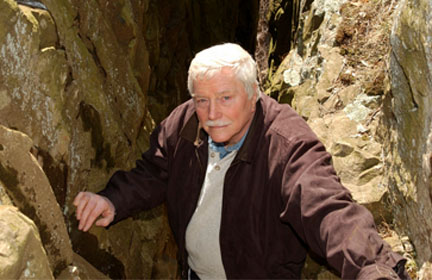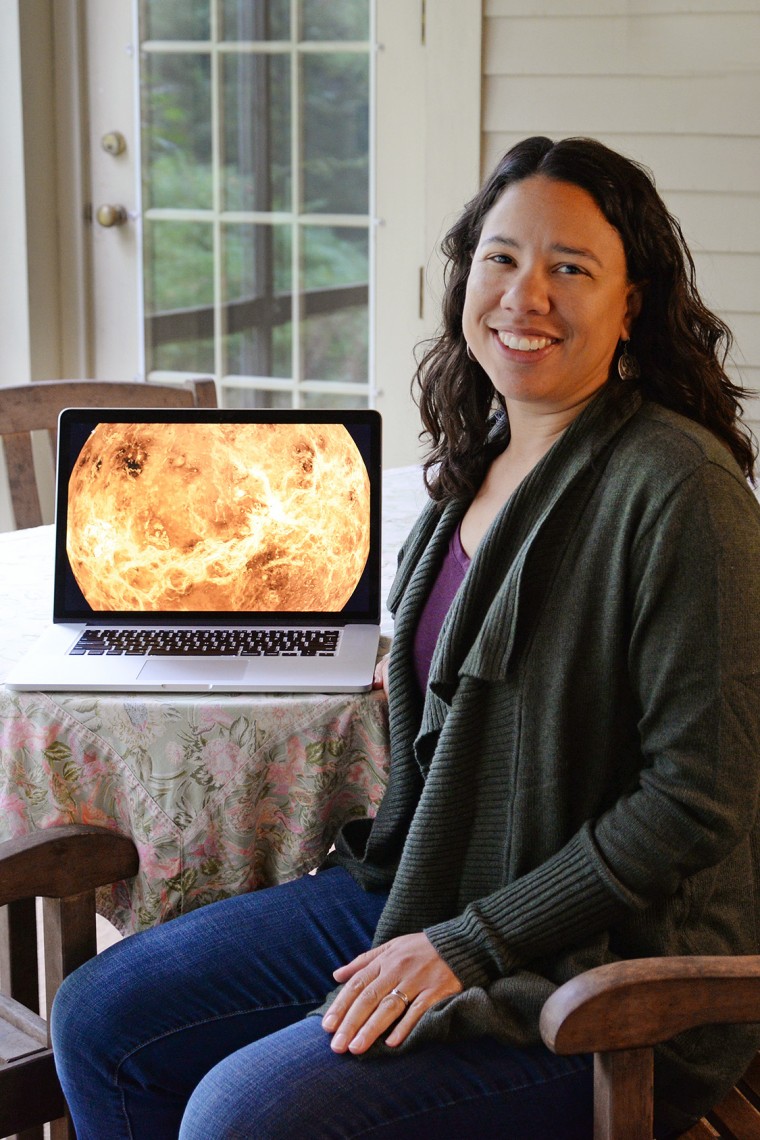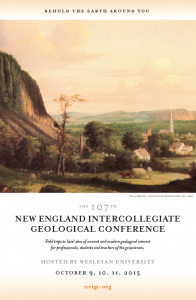Jelle Zeilinga de Boer, the Harold T. Stearns Professor of Earth Science, emeritus, died July 23 at the age of 81. De Boer received his BS and PhD from the University of Utrecht before coming to Wesleyan as a postdoctoral fellow in 1963. During his early years at Wesleyan he worked closely with Geology Professor Jim Balsley in the field of paleomagnetism. In 1977, de Boer was named the George I. Seney Professor of Geology and in 1984 he was named the Harold T. Stearns Professor of Earth Sciences. In the 1970s de Boer worked as a joint professor at the…
Martha Gilmore, George I. Seney Professor of Geology, professor and chair of earth and environmental sciences, joined legendary astronaut and engineer Buzz Aldrin and Hoppy Price of NASA's Jet Propulsion Laboratory for a discussion on WNPR about the past, present and future of space exploration. The three were guests on The Colin McEnroe Show on May 25. Aldrin, who was one of the first two humans to walk on the moon, is the author of a new book, No Dream is Too High: Life Lessons From a Man Who Walked on the Moon. McEnroe asked Gilmore about our current level of understanding…
Three Wesleyan students, faculty and several alumni recently attended the 47th Lunar and Planetary Science Conference in The Woodlands, Texas. This conference brings together international specialists in petrology, geochemistry, geophysics, geology and astronomy to present the latest results of research in planetary science. The five-day conference was organized by topical symposia and problem-oriented sessions. Earth and environmental sciences graduate students Ben McKeeby and Shaun Mahmood, and earth and environmental science major Melissa Lowe ’17 presented their ongoing planetary science research at the conference. Lowe received a NASA CT Space Grant travel award to attend the conference. McKeeby shared his research titled, "An investigation…
On Sept. 30, NASA’s Discovery Program selected five planetary mission investigations for study during the next year as a first step in choosing one or two missions for launch as early as 2020. Wesleyan’s Martha Gilmore is on two of the investigation teams. Gilmore, the George I. Seney Professor of Geology and chair of the Department of Earth and Environmental Sciences, is an expert on terrestrial planets. She studies the morphology and mineralogy of the surfaces of Venus and Mars using data from orbiting and landed spacecraft. She also is on the Executive Committee of NASA’s Venus Exploration Analysis Group…
Wesleyan’s Department of Earth and Environmental Sciences is hosting the 107th New England Intercollegiate Geological Conference Oct. 9-11 on campus and in the field. Several Wesleyan faculty, students and alumni are participating in the conference, which includes trips to local sites of ancient and modern geological interest.
Participants will have the opportunity to examine tectonic slivers of oceanic terrain near New Haven; explore groundwater flow patterns and geologic deposits in Bloomfield; observe a gravel bed channel affected by a dam removal on the Naugatuck River in Waterbury and more.
Martha Gilmore, the George I. Seney Professor of Geology, and her former graduate student Patrick Harner MA ’13 are the co-authors of a paper titled "Visible–near infrared spectra of hydrous carbonates, with implications for the detection of carbonates in hyperspectral data of Mars," published in Icarus, Vol. 250, pages 204-214, April 2015. The paper suggests that hydrous carbonate minerals might be relevant on Mars. "We bought and made these unusual minerals in my lab and then took spectra of them to simulate what Mars orbiters might see. Carbonate minerals form in water on Earth (e.g., limestones), and are predicted for Mars, but…
Maya Gomes ’06 and her co-author Matthew Hurtgen published their paper, “Sulfur isotope systematics in a permanently euxinic, low-sulfate lake: Evaluating the importance of the reservoir effect in modern and ancient oceans,” in the June issue of the journal, Geology. In the paper, the authors present data that shows how geologists can use sulfur isotope compositions of marine sediments to discover variations in oceanic sulfate levels through Earth history. Gomes explained that the paper is very important to researchers who study the climate of the past because “marine sulfate levels play a role in regulating oxygen and carbon dioxide levels…
In the 19th century, the guardian hills of New Haven known as East and West Rock, attracted much attention from poets, painters and scientists. More than two dozen painters sought to capture the magic of the Rocks and the views they allowed of the city. Jelle de Boer, the Harold T. Stearns Professor of Earth Science, emeritus, has combined these artists' works for a current exhibit at the New Haven Museum. De Boer is the author of Stories in Stone: How Geology Influenced Connecticut History and Culture. "New Haven’s Sentinels: The Art and Science of East and West Rock" opened Jan.…
Zeilinga de Boer is the author of Stories in Stone: How Geology Influenced Connecticut History and Culture published by Wesleyan University Press in July 2009. The book is available online from The University Press of New England.
Jelle Zeilinga de Boer, the Harold T. Stearns Professor of Earth Science emeritus, is the author of Stories in Stone: How Geology Influenced Connecticut History and Culture published by Wesleyan University Press in July 2009. In the 228-paged book, geoscientist Zeilinga de Boer describes how early settlers discovered and exploited Connecticut’s natural resources. Their successes as well as failures form the very basis of the state’s history: Chatham’s gold played a role in the acquisition of its Charter, and Middletown’s lead helped the colony gain its freedom during the Revolution. Fertile soils in the Central Valley fueled the state’s development…
Jelle Zelinga de Boer, the Harold T. Stearns Professor of Earth Science, emeritus, was cited in April 3 edition of The Hartford Courant. In an article titled " Remnants Of Old Mine In Middletown Date to Revolutionary Times," de Boer explains why an abandoned silver mine in Middletown, Conn. played a supporting role in the history of the country's industrial past. According to de Boer, the Middletown mine was originally opened to mine lead and was one of only two sites in New England that produced the metal for the Continental Army during the early stages of the Revolutionary War. The…





